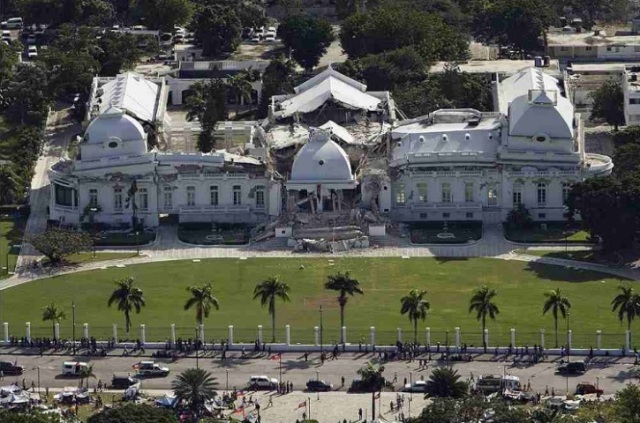Haiti is situated in Caribbean and claims the distinction of bring its third largest country. Browse through the article and explore some fun and interesting facts about Haiti.
Facts About Haiti
Haiti is a Caribbean nation that occupies the western third of the island of Hispaniola, the second largest island in the Greater Antilles. Spread over an area of approximately 27,750 square kilometers, the nation has a mountainous landscape, dotted with small coastal plains and river valleys, and enjoys a tropical climate. Haiti is the third largest country in the Caribbean, behind Cuba and the Dominican Republic. It also boasts of having the second longest coastline of all countries in the Antilles, with Cuba having the longest. Throughout its rich history, Haiti is known for its series of natural calamities; earthquakes being the most predominant of them all. Haiti is the most populous of all the Francophone nations around the world. Here, French is also accepted as an official language, considering that the nation got its independence on January 1, 1804, which followed by a great slave revolution. If you are interested in knowing more fun and interesting facts about Haiti, read on.

Image: By Logan Abassi / UNDP Global [CC-BY-2.0 (http://creativecommons.org/licenses/by/2.0)], via Wikimedia Commons
Fast Facts
Continent: North America
Area: 27,750 km2
Capital: Port-au-Prince
Population: 9,719,932
Currency: Gourde
Official Languages: French, Haitian Creole
Independence Day: January 1, 1804
Calling Code: 509
Type Of Government: Unitary, semi-presidential republic
Fun & Interesting Facts About Haiti
- The official name of Haiti is the 'Republic of Haiti'
- The capital of Haiti is Port-au-Prince.
- The official languages of Haiti include French and Haitian Creole.
- Majority of the people in Haiti are Roman Catholics, followed by Protestants and Voodoo followers.
- The currency of Haiti is Gourde.
- Around 95 percent of the population of Haiti comprises of Blacks, while Multiracial, Arabs and Europeans make up the rest 5 percent.
- Port-au-Prince is the largest city in Haiti, in terms of population.
- Haiti follows the system of 'Presidential Republic'.
- Haiti was the first post-colonial independent black-led nation in the world.
- Haiti is the only nation in the world whose independence was gained as part of a successful slave rebellion.
- Haiti was the first nation in Latin America to gain its sovereignty
- Haiti is the only independent Francophone nation in Latin America. All the other French-speaking Latin American nations are overseas departments of France.
- Haiti shares the island of Hispaniola with the Dominican Republic.
- Hispaniola, along with Cuba, Jamaica and Puerto Rico, is a part of an island chain known as the Greater Antilles.
- Haiti is one of the poorest countries in the Western Hemisphere.
- Hispaniola was visited Christopher Columbus, in the service of Spain, in 1494.
- The term 'Haiti' is derived from 'Ayti', a Taino word that means 'mountainous land'.
- Did you know? Haiti is not considered a third world country. The infrastructure is so weak in this country that it is actually considered a fifth-world country, and a first in its league.
- French rule was established in Haiti in 1790s, when the uprising by slaves brought an end to slavery.
- Haiti gained independence from France on 1st January 1804, when it was declared a Republic.
- Haiti annexed Santo Domingo between 1822 and 1844.
- US troops occupied the Republic of Haiti between 1915 and 1934.
- Haiti was under the dictatorship of Francois Duvalier, known as Papa Doc, between 1956 and 1971.
- Jean-Bertrand Aristide became the first democratically elected president of Haiti, in 1990.
- USA and United Nations imposed sanctions on Haiti in 1991 and 1993, respectively.
- Haiti is divided into 10 departments - Artibonite, Centre, Grand'Anse, Nippes, Nord, Nord-Est, Nord-Ouest, Oues, Sud-Est and Sud.
- The 10 departments of Haiti are further divided into 41 arrondissements, and 133 communes.
- The main industries of Haiti are sugar refining, flour milling, textiles and cement.
- Decades of violence and instability in Haiti has made it the poorest country in the Americas.
- The highest point in Haiti is formed by Pic la Selle, at 2,680 meters.
- The life expectancy in Haiti is 50-54 years and adult literacy is only 46%. It is believed that only 1/3rd of the population are estimated to have jobs.
See also
More from iloveindia.com
- Home Remedies | Ayurveda | Vastu | Yoga | Feng Shui | Tattoos | Fitness | Garden | Nutrition | Parenting | Bikes | Cars | Baby Care | Indian Weddings | Festivals | Party ideas | Horoscope 2015 | Pets | Finance | Figures of Speech | Hotels in India : Delhi | Hyderabad | Chennai | Mumbai | Kolkata | Bangalore | Ahmedabad | Jaipur
- Contact Us Careers Disclaimer Privacy Policy Advertise With Us Lifestyle Sitemap Copyright iloveindia.com. All Rights Reserved.







